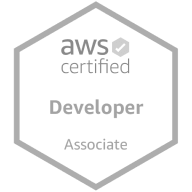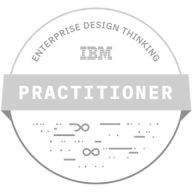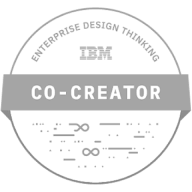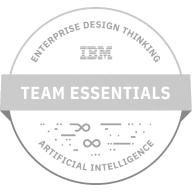![Web Application Development Cost in 2025 [A Step-by-step Guide]](assets/uploads/blog/20251030/cover-small.png)
Web Application Development Cost in 2025 [A Step-by-step Guide]
Want to know more? — Subscribe
The web development market is booming – valued at $74.69 billion in 2025 and set to reach $104.31 billion by 2030. Even more impressive? The progressive web app market is exploding at a 31% growth rate, reaching $22.07 billion by 2034.
Web applications like Google Docs, Amazon, and Facebook aren't just websites – they're complex apps delivering robust services. Businesses investing in web apps typically see strong returns through subscriptions, e-commerce, and automation.
But what does it actually cost? Web app development typically takes 3-6 months and ranges from $5,000 to $50,000, with the final price increasing as features become more complex. Since businesses see massive potential returns, we'll break down web app development costs and highlight proven ways to reduce your expenses while maximizing value.
An Overview of Average Web App Development Costs
Understanding web app development pricing isn't simple– there's no one-size-fits-all answer. However, based on industry data and real project experiences, here's what you can realistically expect at different investment levels:
- Up to $50,000: Discovery and Validation Phase. This budget provides a template-based prototype, ideal for validating ideas and attracting investors. You'll receive a functional proof of concept built on platforms like Sharetribe, complete with basic features and professional documentation to showcase your vision.
- $50,000 to $100,000: Basic Custom Web App. At this level, you can launch a simple but functional custom application with core features, template-based design, and third-party integrations. It's ideal for early user acquisition and testing your market fit with real customers.
- $100,000 to $300,000: Full-Featured Market-Ready App. This investment delivers a professionally designed, feature-rich application ready to compete with established players. Expect custom design, advanced functionality, multiple integrations, enhanced security, and cross-platform compatibility.
- $500,000+: Enterprise-Level Solution. For businesses requiring complex, multi-module architecture with advanced scalability, custom functionality, and enterprise-grade security. These applications are built to handle high user loads and serve as the digital backbone of your entire business operation.
Factors Affecting the Average Cost of Developing a Web App
Understanding what drives web app development costs helps you make informed budget decisions and avoid unexpected expenses. Here are the key factors that influence your total investment:
1. Type of Web Application
The type of web app you select has a direct impact on the final cost. Depending on the level of complexity, prices may vary by 30% to 200%. Each category serves a different purpose and requires a different level of effort, technology, and expertise.
Static Web Applications: $3,000 – $10,000
A static
web app works as a digital brochure. Content remains the same until it is
manually updated, making it reliable and cost-effective. This option suits
small businesses, personal portfolios, or landing pages. Since there is no
complex backend, it loads fast and requires minimal maintenance. However, it
does not offer interactive features.
Dynamic Web Applications: $10,000 – $25,000
A dynamic app adjusts its content in real-time based on user actions. It
connects with databases and runs server processes to deliver personalized
results. This type is suitable for blogs, news portals, or platforms that rely
on frequent updates. While it costs more than a static site, it creates
stronger user engagement.
Single-Page Applications (SPAs): $15,000 – $40,000
SPAs load a single page in the browser and update content without reloading.
They use frameworks such as React, Angular, or Vue. The experience feels
smooth and fast, similar to a desktop program. Businesses choose SPAs for
dashboards, social networks, or SaaS platforms where speed and usability
matter. The higher cost is due to advanced frontend work and complex
development.
Progressive Web Applications (PWAs): $20,000 – $60,000
PWAs combine the best features of web and mobile apps. They work offline, send
push notifications, and provide an app-like experience directly in the
browser. A PWA suits businesses that want both mobile and desktop reach
without the expense of two separate apps. Retailers, media outlets, and
service providers often choose this option.
eCommerce Web Applications: $30,000 – $150,000+
An eCommerce app requires strong security, payment gateways, inventory
control, and advanced user features such as wishlists, product filters, and
personalized offers. Costs rise as the platform grows in size and
functionality. Small online shops may fall near the lower range, while large
multi-vendor marketplaces may exceed the upper range. Businesses must also
factor in compliance with payment regulations and ongoing support.
2. Features and Functionality
Your feature set directly determines development complexity and cost:
Features and Functionality Cost Breakdown
|
Feature Tier |
Estimated Cost (per feature) |
Typical Features |
Example Use Cases |
|---|---|---|---|
|
Basic Features |
$1,500 – $5,000 |
- User authentication & profiles - Basic UI/UX design - Mobile responsiveness - Static & dynamic content |
- Login system for users - Responsive company website - Blog with text & image posts |
|
Advanced Features |
$3,000 – $13,000 |
- Third-party integrations - eCommerce functionality - Multilingual support - Advanced analytics & reporting - Real-time notifications |
- Online store with payment gateway - Multilingual business platform - Dashboard with sales analytics - Push notifications for updates |
|
Deep-Tech Features |
$6,000 – $25,000 |
- AI & machine learning - Blockchain implementation - IoT integration - AR/VR capabilities |
- AI chatbot for customer support - Blockchain-based transactions - Smart home app with IoT devices - AR try-on feature for eCommerce |

|
|||
3. UI/UX Design Requirements
UI/UX design plays a massive role in how users experience your product. It doesn't just make things look pretty — it defines how easy, smooth, and enjoyable it is to use your app or website. In fact, design complexity alone can take up 15% to 50% of your total development cost.
Here's how the main options break down:
Template-Based Design ($2,000 – $5,000)
- Uses pre-built layouts with limited customization.
- Fast and budget-friendly, but lacks originality.
- Best suited for small businesses or MVPs that need to go live quickly.
- Example: A startup landing page built with a modified WordPress theme.
Custom UI/UX with Branding ($6,000 – $8,000)
- Tailor-made visuals aligned with your brand identity.
- Includes unique typography, custom icons, and branded color schemes.
- Creates a distinct user experience that stands out from competitors.
- Example: A SaaS platform dashboard designed entirely from scratch to reflect the brand's look and feel.
Wireframing & Prototyping ($1,000 – $4,000)
- Focuses on mapping the user journey before coding starts.
- Uses low- or high-fidelity wireframes to test layouts and flows.
- Helps validate ideas early and avoid costly design mistakes later.
- Example: A clickable prototype in Figma or Adobe XD for investor demos.
Usability Testing ($2,000 – $5,000)
- Involves real users interacting with your product.
- Covers A/B testing, heatmaps, and user feedback analysis.
- Identifies friction points that lower engagement or conversions.
- Example: Testing how quickly users can complete a checkout process in an eCommerce app.
4. Development Approach
The way you choose to develop your product can change the cost by 30% to 100%. If you go with custom development, expect to spend anywhere from $12,000 to $25,000 or more. This option gives you full control over features, scalability, and security. It's the path companies like Shopify Plus take, where everything is built from scratch to handle millions of users. The downside is that it requires more time and a bigger budget.
A cheaper and faster option is using template-based solutions, which cost around $5,000 to $8,000. These rely on pre-designed layouts and built-in features, so your project can go live much quicker. The trade-off is less customization. Think of a restaurant launching its website with a WordPress theme — it looks good and works well, but won't feel truly unique.
The lowest-cost approach is typically a no-code or low-code platform, which usually costs between $500 and $5,000. With drag-and-drop tools, you can cut development costs by up to 80%. The catch is that these solutions often struggle to scale when your business grows. A good example is a small company building a booking app with Bubble or an internal dashboard in Airtable. It's quick, simple, and affordable, but not ideal for highly complex projects.
5. Development Team Location
- Geographic location plays a significant role in project cost, as developer hourly rates vary widely across regions.
| Region | Hourly Rate (USD) | Pros | Cons | Example Use Case |
|---|---|---|---|---|
|
United States |
$100 – $150 |
- Top talent pool - Strong communication (native English) - Deep knowledge of cutting-edge tech |
- Highest rates globally - Expensive for long-term projects |
Enterprise-level apps for Fortune 500 companies |
|
United Kingdom |
$80 – $140 |
- Skilled workforce - Strong fintech and startup culture - Same timezone for EU clients |
- Still costly - Limited developer availability compared to US/India |
Fintech platforms in London's startup hub |
|
Canada |
$70 – $130 |
- High-quality work - Cultural similarity to US - Growing tech hubs like Toronto & Vancouver |
- Costs nearly as high as the UK - Smaller talent pool than US |
AI-driven apps from Toronto's tech scene |
|
Eastern Europe (Poland, Ukraine, Romania) |
$40 – $75 |
- Excellent tech education - Good English proficiency - Cost-effective balance of quality & price |
- Timezone gaps with US - Occasional communication barriers |
Outsourced SaaS development from Ukraine |
|
India |
$20 – $50 |
- Most affordable rates - Huge talent pool - 24/7 availability for global clients |
- Quality varies a lot - Cultural & timezone challenges |
Building MVPs or support apps at low cost |
|
Australia |
$90 – $140 |
- Skilled engineers - Strong English fluency - Overlaps well with Asian markets |
- Rates close to UK - Smaller developer pool |
Custom enterprise solutions for Asia-Pacific markets |

|
||||
6. Business Size and Requirements
The size of your business has a direct impact on the amount you'll spend and the complexity of your app or website. Bigger businesses typically require more advanced features, while smaller ones can focus solely on the basics.
For small businesses, the typical cost ranges from $8,000 to $10,000. At this stage, the goal is often to build a minimum viable product (MVP) — something simple that works, has only the essential features, and can be improved later. A local shop, for example, might just need a website with product listings, a contact form, and a mobile-friendly design. It keeps costs low but still gets them online quickly.
Mid-sized businesses usually spend between $15,000 and $30,000. They need solutions that can grow with them, so scalability is key. Projects at this level often include third-party integrations, such as payment gateways, advanced analytics, and enhanced security compliance. For example, a regional eCommerce store may want multiple payment options, multilingual support, and a system that can handle thousands of users without slowing down.
For enterprise companies, the costs start at $50,000 and go up from there. These businesses demand high-performance applications with heavy customization. Security is a top priority, along with handling large amounts of data, complex workflows, and multiple system integrations. An enterprise-level banking app, for instance, may include AI-powered fraud detection, blockchain-based security, and integration with internal corporate systems. The investment is much higher, but so is the complexity and reliability required.
7. Compliance and Security Requirements
Some industries are heavily regulated, which means apps in these fields must follow strict rules to protect users and meet government or industry standards. Meeting these rules makes development more complex and often more expensive.
For example, healthcare apps require special approvals, such as FDA clearance in the U.S., and must adhere to HIPAA rules to maintain patient data privacy. They may also require HL7 integration, a standard method for healthcare systems to exchange information securely. Without these, an app cannot be trusted or legally used in the healthcare market.
Fintech apps (apps for banking, trading, or payments) face their own challenges. They must adhere to financial security standards, such as PCI DSS, to ensure the safety of card payments, and AML (Anti-Money Laundering) rules to prevent fraud. Additionally, different countries have their own regional financial laws, which the app must comply with to operate globally.
All these extra steps add to the development budget. In many cases, compliance and security requirements can increase costs by $10,000 to $50,000 or more, depending on the stringency of the rules and the complexity of the app.
In short, if you're building for healthcare or finance, expect to pay more because security and legal approval are not optional — they are essential for protecting users and avoiding legal risks.
8. Ongoing Maintenance Costs
Once your app or website is live, the work doesn't stop. To keep everything running smoothly and securely, you'll need to budget for ongoing maintenance. On average, this costs about 15% to 25% of the initial development cost every year. Here's what that usually includes:
-
Hosting and Servers ($50 – $1,000/month)
This covers the cost of keeping your app or website online. Smaller projects may utilize shared hosting at the lower end of the range, while high-traffic applications require dedicated servers or cloud hosting on platforms such as AWS, Google Cloud, or Azure, which can become expensive. -
Bug Fixes and Updates ($200 – $2,000/month)
Even the best-built apps face bugs, crashes, or compatibility issues with new devices and operating systems. Regular updates ensure your product remains stable, works seamlessly with new OS versions (such as iOS or Android updates), and maintains a smooth user experience. -
Third-Party Service Fees ($50 – $500/month)
Many apps rely on external tools or services such as payment gateways (Stripe, PayPal), email/SMS services (SendGrid, Twilio), or analytics tools. Each of these usually has a monthly subscription fee that adds up over time. -
Security and Compliance Updates ($100 – $1,500/month)
Cybersecurity threats are constant, and industries like healthcare and finance need frequent compliance updates to meet regulations. This includes patching vulnerabilities, renewing SSL certificates, and updating data protection policies. Skipping this step can lead to data breaches or legal penalties. -
Performance Optimization ($100 – $800/month)
Over time, apps can slow down as traffic grows. Ongoing optimization includes database clean-ups, caching improvements, and load balancing to ensure users always receive fast and reliable performance. -
Customer Support & Monitoring ($200 – $1,000/month)
Many businesses also invest in real-time monitoring to identify downtime early, as well as customer support systems to resolve user issues promptly. This improves customer trust and reduces churn.
Choosing the Right Tech Stack: Cost Implications
The choice of a technology stack extends far beyond simply selecting programming languages and frameworks. It directly affects the cost of building, maintaining, and scaling your project over time.
Open-source tools like Python, React, and Node.js keep licensing fees low, but often require teams with specific expertise. Proprietary technologies, on the other hand, bring extra licensing and vendor costs but can offer integrated support that simplifies development. The more advanced the stack, such as AI, blockchain, or cloud-native systems, the higher the price tag, with developers in these areas often charging $100–150 per hour. Beyond initial costs, factors like scalability, future upgrades, and the level of community support can either save or add significant expenses down the road.
"According to Statista's analysis of the 2024 StackOverflow Developer Survey, Node.js (40.8%) narrowly overtook React (39.5%) as the most widely used web framework among developers worldwide, while the State of Frontend 2024 survey shows React maintains strong frontend dominance with 85% of survey respondents having used it in the past year.
React
React is a lightweight JavaScript library that focuses on building fast, modern user interfaces. Its reusable components speed up development and reduce maintenance costs in the long run. React Native also allows teams to share code between mobile and web, making it a cost-effective choice for multi-platform projects.
Example: Facebook and Instagram utilize React to power highly dynamic, interactive interfaces that require real-time updates without compromising performance. For a startup building a social app or a SaaS company creating a customer dashboard, React provides a balance of speed and scalability.
Node.js
Node.js enables developers to write both front-end and back-end code in JavaScript, reducing the need for large, specialized teams. Its event-driven architecture makes it a natural fit for applications that need to handle thousands of simultaneous requests efficiently.
Example: Netflix utilizes Node.js to manage vast volumes of streaming data while maintaining low load times. Similarly, a logistics company building a real-time tracking system or a fintech startup running instant payment updates would find Node.js especially cost-efficient.
Angular
Angular is a structured, full-featured framework maintained by Google. It comes with built-in tools and two-way data binding, making it ideal for large, complex applications that require reliability over time. While developer costs vary by region, Angular's scalability and strong community support can reduce maintenance expenses.
Example: Gmail and Google Drive both rely on Angular's framework to deliver fast, stable, and scalable experiences across millions of users. For enterprises building HR portals, financial dashboards, or healthcare systems, Angular ensures long-term stability and reliability.
.NET / ASP.NET Core
Microsoft's .NET platform is designed for building secure, high-performance enterprise applications. The newer ASP.NET Core version is cross-platform and cloud-ready, which reduces time-to-market while ensuring scalability and integration with other Microsoft tools.
Example: Companies like Stack Overflow and Microsoft Teams are built on .NET for its security, performance, and enterprise-grade reliability. For banks, government systems, or global corporations, .NET offers a trusted environment with strong vendor support.
How Engagement Models Affect Project Costs
The price of web development doesn't just depend on the technology you choose — it also depends on how you work with your development partner. Here are the main engagement models and how they impact cost:
End-to-End Product Development
In this model, the client hands over the whole project to the IT company. The provider builds the product from scratch, manages the team, and takes care of everything — from design and business analysis to coding, testing, and project management.
This option is best suited for companies that lack their own IT department or wish to launch a completely new product. Because the tech partner takes on more responsibility, the cost is usually higher compared to hiring a few developers. At Softermii, these projects are managed using Agile methods (like Scrum or Kanban), which work well when requirements are not fully defined or may change during development.
Team Augmentation
With this model, you add skilled developers from the IT provider to your existing team. The partner handles recruitment, training, and retention, while you stay in control of the project itself.
This setup makes it easy to scale your team up or down depending on workload. You pay per specialist, and rates can be up to 20% lower than traditional outsourcing. It works best for companies that already have strong technical expertise and can manage tasks, deadlines, and budgets independently.
Fixed-Price vs. Flexible Contracts
Another factor that affects the cost is the contract's structure.
- Fixed-price projects: The budget, deadlines, and scope are agreed on before work begins. This model is safer for clients because developers assume the risks, but it's more expensive, as providers add extra charges to cover those risks. It also makes projects less flexible if market conditions change.
- Flexible models (like Time & Materials): Here, you pay for the actual hours worked, and the scope can evolve as the project goes on. This makes costs lower and allows you to adapt to changes. Many companies opt for a mix: for example, developing an MVP within a fixed budget, then transitioning to a flexible model for scaling and improvements.
Hidden Costs in Web Application Development You Need to Consider
When planning a web app project, it's easy to focus only on the obvious expenses — design, coding, and testing. However, many projects exceed budget due to hidden costs that aren't considered upfront. In fact, studies show that 45% of software projects ultimately cost more than originally expected.
Project Management
Managing a project takes time and resources. Coordination, communication, quality checks, and regular reporting can account for 10–15% of the total budget. For complex projects, specialized tools or frequent stakeholder meetings may also be required, which can further increase costs.
Infrastructure and Hosting
Your hosting needs will depend on the complexity of your app and the number of users it serves. Basic hosting can cost as little as $5–$25 per month, but enterprise-level apps may require $100–$10,000+ per month for dedicated servers, cloud infrastructure, CDNs, or advanced security. Many providers also charge extra for essentials like SSL certificates, backups, and data migrations — which means "cheap" hosting can end up being much more expensive than advertised.
Maintenance and Support
Once your app is live, it will need ongoing care. Maintenance typically accounts for 10–20% of annual development costs and encompasses tasks such as bug fixes, security updates, performance optimization, and ensuring the app remains compatible with new browsers and operating systems.
- Simple apps: $50–500/month
- Complex enterprise apps: $1,000–10,000+/month
As your user base grows, so will maintenance costs. Regular code reviews, automated testing, and security audits can help keep these costs under control.
Security and Compliance
Protecting user data requires investment in firewalls, encryption, and regular audits. Depending on the complexity and compliance needs (e.g., GDPR), this can range from $500 to $ 5,000 or more per year.
Scalability
If your app becomes popular, you'll need to handle higher traffic. This may involve upgrading your hosting, adding servers, or migrating to a scalable cloud solution. Basic upgrades cost $20–$200 per month, while high-traffic apps may require $1,000 or more per month to support growth.
Hidden costs like management, hosting, security, maintenance, and marketing can quickly add up and push projects over budget. By planning for them from the very beginning, companies avoid unpleasant surprises and set the foundation for long-term sustainability." — Andrii Horiachko, Co-Founder of Softermii.
 Andrii Horiachko
Andrii HoriachkoTraining and Documentation
Employees and users require training on how to use the system effectively. Training sessions and creating user guides can cost anywhere between $500 and $5,000, depending on complexity.
Marketing and User Acquisition
Building the app is only part of the journey — you also need users. Marketing through ads, SEO, content, and social media can range from a few hundred to tens of thousands of dollars per month, depending on goals.
App Development Cost per Stage
Building an app is not just about coding — it's a multi-step process where each stage requires time, expertise, and investment. Understanding how costs break down at different stages helps businesses plan smarter and avoid budget shocks.
1. Discovery & Research
At this stage, the idea takes shape. The team works on market research, user analysis, and project documentation. Costs here cover business analysts, product managers, and sometimes UX researchers.
- Approximate cost: $5,000 – $15,000
- Example: For a fintech app, this stage may include competitor analysis, compliance research, and feature prioritization.
2. UI/UX Design
Designers create wireframes, user flows, and clickable prototypes to make sure the product is intuitive and engaging.
- Approximate cost: $5,000 – $20,000
- Example: A food delivery app would need user-friendly restaurant menus, cart screens, and simple checkout flows.
3. Development
This is the most resource-intensive stage, where engineers write the code for the frontend and backend, integrate APIs, and build core functionality.
- Approximate cost: $30,000 – $150,000+
- Example: A ride-hailing app requires geolocation tracking, real-time driver updates, and payment integration — all of which add complexity and cost.
4. Testing & Quality Assurance (QA)
QA engineers conduct functional, performance, and security tests to ensure the app operates smoothly across various devices and platforms.
- Approximate cost: $5,000 – $25,000
- Example: An e-commerce app requires stress testing during high-traffic scenarios, such as Black Friday, to prevent crashes.
5. Deployment
Publishing the app on the App Store and Google Play involves configuration, compliance checks, and sometimes adjustments to ensure approval.
- Approximate cost: $2,000 – $5,000
- Example: A healthcare app may require additional compliance steps (such as HIPAA) before being approved for the app store.
6. Maintenance & Updates
After launch, continuous work is needed for bug fixes, performance optimization, new features, and OS updates.
- Approximate cost: 15–20% of the initial development cost annually
- Example: A social media app would need frequent updates to introduce new interaction features and security patches.
Tips to Reduce the Web App Development Cost
Building a web app requires a significant investment, but implementing smart strategies can help you manage costs without compromising quality. Here are proven methods to optimize your development budget:
1. Start with an MVP (Minimum Viable Product)
Instead of building every feature from the start, focus on the core functionality that solves your users' primary problem. An MVP approach:
- Reduces initial costs by 40% or more
- Costs $5,000 - $15,000 vs. $60,000+ for full-featured apps
- Allows you to test your concept with real users
- Generates early revenue to fund additional features
Real-world example: Instagram launched with just photo-sharing capabilities, then gradually added stories, messaging, and shopping features based on user feedback.
2. Choose Cost-Effective Technologies
Your technology stack significantly impacts both development and ongoing costs:
| Category | Technology / Skill | Common Use Cases | Strengths | Limitations | Cost Impact |
|---|---|---|---|---|---|
|
Frontend (Open-Source) |
React.js |
Dashboards, SPAs, SaaS platforms |
Huge community, reusable components, fast rendering |
Can grow complex for large apps |
Saves $10K–$50K (no licenses) |
|
Vue.js |
Small–medium apps, startups, lightweight SPAs |
Easy to learn, flexible, fast setup |
Smaller ecosystem vs. React |
Saves $10K–$50K |
|
|
Backend (Open-Source) |
Node.js |
Real-time apps (chat, streaming), APIs |
High scalability, same language (JS) for frontend & backend |
Callback hell, not best for CPU-heavy apps |
Saves $10K–$50K |
|
Django (Python) |
Marketplaces, fintech apps, content platforms |
Secure, batteries-included, great for rapid prototyping |
Can feel heavy for simple apps |
Saves $10K–$50K |
|
|
Database (Open-Source) |
PostgreSQL |
Enterprise apps, financial systems |
Strong relational features, ACID compliance |
Higher learning curve |
Saves $10K–$50K |
|
MongoDB |
Real-time apps, IoT, analytics dashboards |
Flexible schema, great for large data sets |
Not ideal for complex transactions |
Saves $10K–$50K |
|
|
Developer Rates |
JavaScript Devs |
Web & mobile apps, SPAs, PWAs |
Wide talent pool, versatile |
Skill level varies a lot |
$18–$200/hour |
|
Python Devs |
AI/ML apps, fintech, automation |
Strong in AI/ML, rich libraries |
Slower for high-performance apps |
$25–$70/hour |
|
|
PHP Devs |
Content sites, eCommerce (WordPress, Magento) |
Easy to find talent, cost-effective |
Outdated reputation, patchy performance |
$14–$71/hour |
|
|
Ruby on Rails Devs |
Marketplaces, MVPs, startups |
Fast development, good conventions |
Smaller community today |
$47–$82/hour |
|
|
Java Devs |
Enterprise apps, banking, Android backend |
Scalable, proven for big systems |
Slower dev cycle, heavier setup |
$20–$75/hour |
|

|
|||||
3. Leverage No-Code/Low-Code Platforms
These platforms can cut development time by 50% to 80%, making them attractive for businesses with tight budgets or short deadlines.
- Cost Reduction: Expenses may decrease by up to 80% compared to fully custom development, as many features are pre-built and do not require separate coding.
- Speed: Projects reach the market much faster, often within weeks instead of months, which allows companies to test ideas and attract users earlier.
- Ease of Use: Many platforms offer drag-and-drop interfaces and ready-made templates, allowing even teams without extensive technical knowledge to launch functional apps.
- Limitations: Flexibility is lower compared to custom solutions. Businesses may face restrictions in design, feature depth, and integration with complex systems. Growth may also introduce scalability issues if the platform cannot handle high traffic or complex workflows.
- Security Risks: Since many users share these tools, security settings may be limited. Sensitive industries, such as finance and healthcare, often prefer custom development for enhanced protection.
- Best For: Prototypes, MVPs (Minimum Viable Products), simple internal tools, or small business apps where speed and cost matter more than unique features.
4. Strategic Outsourcing
Choosing the right development location can reduce costs by 50% to 150%:
| Region | Average Cost Savings | Strengths | Challenges | Best For |
|---|---|---|---|---|
|
Eastern Europe (Poland, Ukraine, Romania) |
40–60% |
Strong engineering culture, reliable quality, good overlap with EU/US time zones |
Slightly higher rates than Asia |
Complex apps, enterprise, SaaS |
|
India |
60–80% |
Lowest rates, massive talent pool, strong IT services industry |
Needs strict project management, time zone gaps with US |
Cost-driven projects, large enterprise outsourcing |
|
Latin America (Brazil, Mexico, Argentina, Colombia) |
35–55% |
Time zone alignment with US, cultural proximity, growing tech hubs |
Talent shortage in some areas, rates higher than Asia |
US-based startups needing close collaboration |
|
Southeast Asia (Philippines, Vietnam, Indonesia) |
50–70% |
Competitive rates, strong English skills (Philippines), growing developer ecosystem |
Quality can vary, limited senior talent in some fields |
Startups, support apps, content-heavy platforms |
|
Africa (Kenya, Nigeria, South Africa, Egypt) |
40–65% |
Emerging talent, growing startup culture, lower costs |
Smaller talent pool, less experience with global projects |
Pilot projects, long-term partnerships |
|
Central Europe (Czech Republic, Hungary, Slovakia) |
35–55% |
EU regulations, strong education system, cultural fit with Western Europe |
Rates higher than Eastern Europe |
European companies wanting quality + proximity |
|
East Asia (China) |
50–70% |
Huge talent base, advanced in AI/ML, strong technical skills |
Language barriers, IP/security concerns |
Large enterprises, AI-focused solutions |

|
||||
5. Adopt Agile Development Methodology
Agile development helps control costs through:
- Iterative Approach: The product grows step by step through small increments. Instead of spending months on a large release, teams deliver working parts regularly. This makes progress visible and ensures that money goes into features that add real value.
- Regular Feedback: Clients and end-users provide input at every stage. This helps the team avoid spending resources on features nobody needs. Adjustments occur quickly, keeping the project aligned with business goals.
- Flexibility: Scope can expand or shrink depending on budget and priorities. If funds are limited, only the most critical features move forward. If more resources become available, extra functions can be added later.
- Risk Reduction: Problems surface early in the process. Bugs, design flaws, or technical challenges cost much less to fix during development than after launch. Agile lowers the chance of expensive rework.
- Transparency and Control: Regular sprint reviews and planning sessions keep stakeholders informed. Businesses know where the money goes and can make smarter decisions about future investments.
- Faster Return on Investment: Since usable features appear early, the product can reach the market sooner. This allows companies to start earning revenue or collecting user feedback while development continues.
6. Prioritize Features Strategically
Focus development efforts on high-impact features:
Feature Prioritization Framework
| Priority Level | Features | Purpose | Business Impact | When to Implement |
|---|---|---|---|---|
|
Must-Have (Phase 1) |
- User authentication - Core functionality - Basic UI/UX - Mobile responsiveness |
Build a functional, secure, and usable product foundation |
Essential for launch, user trust, and product adoption |
At the start, to create MVP and test market quickly |
|
Nice-to-Have (Phase 2+) |
- Advanced analytics - Third-party integrations - Advanced customization - AI/ML capabilities |
Improve user experience, add competitive advantage, and drive long-term engagement |
Enhances product value, helps differentiation, boosts retention |
After MVP validation, once budget and resources allow |

|
||||
7. Automate Testing and DevOps
Implementing automation reduces long-term maintenance costs:
Automated Testing: Automated test scripts run every time new code is added. This ensures that bugs are caught early, long before they reach end users. Fixing issues during development is up to ten times cheaper than fixing them after launch. Automated testing also improves consistency, since machines do not miss errors the way manual checks sometimes do.
CI/CD Pipelines: Continuous Integration (CI) and Continuous Deployment (CD) pipelines create a smooth flow from coding to production. Each update moves through automatic build, testing, and deployment steps. This shortens release cycles, lowers the risk of human error, and enables the delivery of frequent improvements without disrupting users.
Cloud Infrastructure: Automated scaling in cloud platforms like AWS, Azure, or Google Cloud helps companies pay only for the resources they actually use. As traffic increases, servers scale up instantly; when demand decreases, resources scale down. This eliminates over-provisioning costs while ensuring stable performance during peak demand.
Operational Monitoring: Automation tools constantly monitor app health, performance, and security. Alerts notify teams about unusual activity, such as slow response times or suspicious traffic. Quick action prevents downtime, protects revenue, and ensures customer satisfaction.
Security Automation: Automated scans and compliance checks strengthen protection. Vulnerabilities are flagged immediately, and patches can be applied without waiting for manual reviews. This is especially valuable in industries with strict regulations.
Example – Netflix: Netflix relies heavily on automated AWS cloud infrastructure to serve millions of users worldwide. Systems automatically adjust to streaming demand, scaling up during peak hours and scaling down when demand falls. This approach saves the company millions every year and guarantees uninterrupted service quality.
Real-Life Examples: Web App Development Costs by Industry
Understanding costs becomes clearer when you see real-world examples. Here are development cost estimates for building apps similar to famous platforms across different industries:
1. Real Estate - Zillow/Redfin Style Platform
Real estate platforms have revolutionized the property search and transaction process, transforming the way buyers, sellers, and agents interact. These platforms must handle massive databases, provide accurate market data, and offer seamless user experiences across web and mobile devices.
Features: Property search, listings, photos, floor plans, neighborhood data, mortgage calculators, agent profiles, virtual tours
Development Cost: $83,000 - $300,000
- Basic version: $30,000 - $50,000
- Feature-rich platform: $75,000 - $100,000+
- Enterprise-level: $300,000+
2. Fintech - PayPal/Stripe Style Payment Platform
Financial technology platforms require the highest security standards while maintaining user-friendly interfaces. These systems must comply with strict regulations, process transactions in real-time, and provide robust fraud protection mechanisms.
Features: Digital payments, multi-currency support, fraud detection, transaction processing, wallet functionality
Development Cost: $30,000 - $300,000+
- Basic payment app: $50,000 - $75,000
- Advanced payment processor: $150,000 - $500,000
- Full fintech platform: $60,000 - $250,000
3. Healthcare - Teladoc/Amwell Style Platform
Healthcare applications must prioritize patient privacy, data security, and regulatory compliance. These platforms enable remote consultations, manage patient records, and integrate with existing healthcare systems while maintaining HIPAA compliance.
Features: Video consultations, patient records, appointment scheduling, prescription management, HIPAA compliance
Development Cost: $40,000 - $400,000+
- Simple telemedicine app: $40,000 - $55,000
- Feature-rich platform: $150,000 - $250,000
- Enterprise healthcare system: $100,000 - $500,000
4. Logistics - Uber/DoorDash Style Platform
Logistics platforms coordinate complex multi-party interactions, requiring sophisticated algorithms for matching, routing, and real-time tracking. These systems must handle high transaction volumes while providing seamless experiences for customers, drivers, and businesses.
Features: Real-time tracking, GPS navigation, driver matching, payment processing, rating systems, multi-sided marketplace
Development Cost: $80,000 - $400,000+
- Basic ride-sharing MVP: $80,000 - $150,000
- Full logistics platform: $200,000 - $400,000
- Enterprise supply chain solution: $400,000+
5. Social Media - Instagram/TikTok Style Platform
Social media platforms require robust infrastructure to handle content uploads, real-time interactions, and massive user bases. These systems must support various media types, implement content moderation, and provide engaging user experiences.
Features: User profiles, content upload/sharing, social features, real-time feeds, messaging, content moderation
Development Cost: $100,000 - $500,000+
- Basic social platform: $100,000 - $200,000
- Advanced features (stories, live streaming): $300,000 - $500,000
- Enterprise social network: $500,000+
6. E-Learning - Coursera/Udemy Style Platform
Educational platforms must support diverse learning formats, track student progress, and provide certification systems. These platforms require robust video delivery, interactive elements, and comprehensive assessment tools.
Features: Course creation tools, video streaming, progress tracking, certificates, payment processing, and user management
Development Cost: $60,000 - $350,000+
- Basic LMS platform: $60,000 - $120,000
- Advanced e-learning system: $150,000 - $250,000
- Enterprise training platform: $250,000 - $350,000+
7. Food Delivery - Uber Eats/DoorDash Style App
Food delivery platforms coordinate restaurants, delivery drivers, and customers while managing real-time inventory, order processing, and logistics. These systems require sophisticated order management and delivery optimization algorithms.
Features: Restaurant listings, menu management, order processing, delivery tracking, payment systems, multi-user interfaces
Development Cost: $120,000 - $450,000+
- Basic food delivery app: $120,000 - $200,000
- Full-featured platform: $250,000 - $350,000
- Multi-region enterprise solution: $400,000 - $450,000+
8. Marketplace - Amazon/Etsy Style Platform
Marketplace platforms must support multiple vendors, complex product catalogs, and sophisticated search functionality. These systems require robust seller tools, buyer protection mechanisms, and scalable infrastructure to handle high transaction volumes.
Features: Vendor management, product catalogs, search functionality, payment processing, order management, reviews/ratings
Development Cost: $150,000 - $500,000+
- Basic marketplace MVP: $150,000 - $250,000
- Advanced e-commerce platform: $300,000 - $400,000
- Enterprise marketplace solution: $500,000+
How to Choose a Web App Development Company?
Selecting the right development partner is just as critical as the idea itself. The company you choose will determine not only the quality of your product but also the speed, scalability, and long-term success of your app. Here are several aspects worth paying attention to:
Proven experience in your domain. Look for a team that has already built apps in your industry. For instance, if you're planning a healthcare solution, a company with experience in HIPAA-compliant apps can save you months of trial and error.
Portfolio and case studies. Go beyond glossy websites and ask to see real projects. Case studies should explain the client's challenge, the solution provided, and the measurable results — whether that's increased user retention, faster load times, or higher conversions.
Technical expertise and stack versatility. A good partner isn't locked into a single framework. They should be able to advise whether React, Angular, or Vue is best for the front end, or whether Node.js or Django is a better fit for the backend — always based on your business needs, not their convenience.
Communication and transparency. Clear reporting, regular updates, and direct access to the development team prevent misunderstandings. Agile methodologies with sprint reviews often work best, giving you the chance to steer the product as it evolves.
Scalability and post-launch support. The first version is only the beginning. Ask how the company approaches scaling an app to handle thousands of users or integrating new features down the road. Ongoing support and maintenance contracts are a sign of reliability.
Client references and reviews. A quick call with a past client can reveal more than any marketing material. Questions like "How did they handle delays?" or "Did they stick to the budget?" give you a clearer picture of what working with them is really like.
Cultural fit and collaboration style. Beyond skills, consider whether the company's culture matches yours. A partner who values flexibility, innovation, and speed will be a better match for a startup, while enterprises may prefer a process-heavy, risk-averse team.
Web App Monetization Strategies
Building a web app is only half the journey — making it profitable is the other. Choosing the right monetization model depends on your target audience, the type of app, and market trends. Here are some of the most common approaches:
Freemium model. Users download your app for free but pay for premium features, extra content, or advanced functionality. Spotify is a classic example: you can listen for free with ads, but the premium subscription unlocks ad-free listening and offline access.
In-app purchases. This model works well for gaming, fitness, and lifestyle apps. Users can buy virtual goods (skins, coins, levels) or physical products directly inside the app. Candy Crush, for instance, earns millions by selling lives and boosters.
Subscription plans. Recurring payments are one of the most sustainable revenue streams. Apps like Netflix and Duolingo rely on subscriptions to maintain a steady business while delivering continuous value to users.
Advertising. Placing ads inside your app can generate income without requiring direct charges to users. Formats range from banners and pop-ups to rewarded video ads (watching an ad unlocks some benefit). However, overloading your app with ads can hurt user experience.
Sponsorship and partnerships. Brands may pay to be featured in your app if your user base aligns with their audience. A fitness app, for example, might partner with sportswear companies to promote their gear through integrated campaigns.
Pay-per-download. Although less common today, some apps still charge a one-time fee to download. This model works best if your app delivers immediate, clear value — think professional tools like graphic editors or business utilities.
Hybrid approach. Many successful apps mix two or more models. For example, offering a free version supported by ads, plus a paid ad-free subscription with extra features. This way, you maximize revenue streams while catering to various user types.
Our Expertise
Over the years, we've partnered with companies across industries to deliver scalable, user-friendly, and innovative digital products. From real estate to telemedicine, our team has helped businesses launch apps that transform their services and bring real value to users.
Rently – Bringing IoT into the Property Rental Industry
The Client
Rently is a U.S.-based company specializing in
self-touring applications. They asked us to help improve
their mobile and web apps in terms of usability and
performance.
Year: July 2017 – January 2019
Team:
5 members
Industry: Real Estate
Platform:
Web / Mobile
Key Features
- Smart Lockbox – Keyless property access via app
- Property Listings – Detailed lists of available rentals
- Renters Access – Easy profiles for picking up an object
- Payments – Third-party integration for in-app payments
- Landlord Dashboards – Simple navigation for scheduling
- Property Maps – Google Maps API with custom filters
Development Flow
- Business Analytics: User personas and industry research
- Design: Mockups for both web and mobile
- Development: Tight deadlines met to speed up release
- Release: Smooth launch with positive user feedback
Tech Stack
Swift, Google Maps & Places, WordPress, Firebase, MVC
HIPAA Telmed – Access to Medical Assistance with No Boundaries
The Client
HIPAA Telmed is an American telemedicine startup that set out
to create a secure video conferencing platform with
AI-powered transcription and
documentation automation for doctors and patients.
Year: March 2017 – March 2020
Team: 12 members
Industry: Telemedicine
Platform: Web
Key Features
- Video & Audio Calls – Stable, real-time consultations
- Appointment Management – Easy scheduling system
- Dashboards – Quick access to EHR, calendar, documents
- Screen Sharing – Share details during visits
- Document Sharing – Encrypted medical file exchange
- Payments – Online consultation billing
- AI Transcription & Summaries – Automated visit notes in PDF
- Physician Ratings – Scoring system for quality
- Data Encryption – HIPAA-level data protection
Development Flow
- Business Analytics: Researched compliance, trends, and workflows
- Design: User-friendly UI for doctors & patients
- Development: Customized WebRTC, added HIPAA security protocols
- Release: Secure, scalable app praised for simplicity and reliability
Tech Stack
WebRTC, TLS/TDL, Role-Based Authorization,
Cloud Infrastructure, AI Engines
Conclusion
The cost of web app development in 2025 is not only about the initial budget. It also depends on choices around the tech stack, engagement model, hosting, updates, and other hidden expenses that often raise the final price.
Every project has its own path. Some apps need a fast MVP to test the market, while others require enterprise-level stability and scale. The key is to plan, account for hidden costs, and choose a partner who understands both the technology and the business goals.
At Softermii, we help companies in real estate, healthcare, and many other industries turn ideas into sustainable products. The right decisions at the start can save both money and stress later. If you want to build a product that grows with your business, we are ready to guide you step by step.
Frequently Asked Questions
How much does it cost to build a web application?
The cost varies depending on the app's complexity, tech stack, features, and team structure. Basic apps cost less, while enterprise-level solutions with advanced functionality require a higher budget.
Which factors have the biggest impact on web application development costs in 2025?
Key factors include the choice of technology stack, design and user experience requirements, team composition, maintenance needs, hosting, and any hidden expenses like security, scalability, and updates.
How can companies reduce web application development costs?
Businesses can save by prioritizing essential features, selecting the right engagement model, utilizing open-source technologies, planning for scalability upfront, and collaborating with experienced development teams that optimize workflow.
What steps are involved in estimating web application development costs?
Cost estimation typically includes requirements analysis, defining project scope, selecting a tech stack, planning the design and development phases, and accounting for ongoing maintenance and infrastructure.
What are the cost differences between freelancers, agencies, and in-house teams?
Freelancers may charge less per hour but require more management, agencies provide full-cycle services at a higher price, and in-house teams offer full control but involve salaries, benefits, and long-term overhead.
How long does it take to develop a web application?
Development time depends on project complexity. Simple MVPs can take a few weeks, while full-featured enterprise apps often take several months or more to complete.
How about to rate this article?
0 ratings • Avg 0 / 5
Written by:






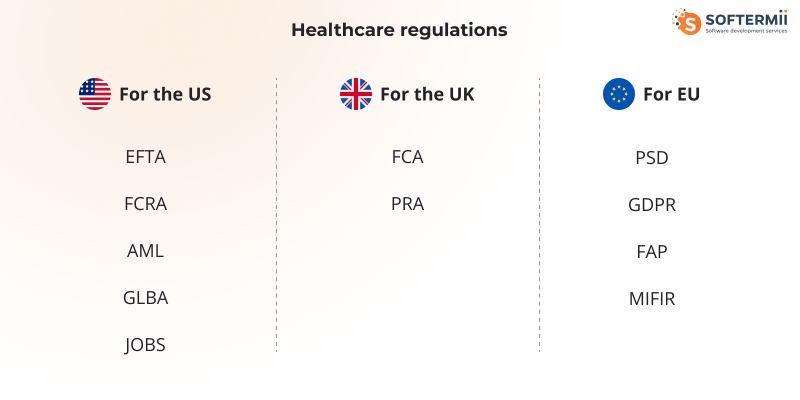
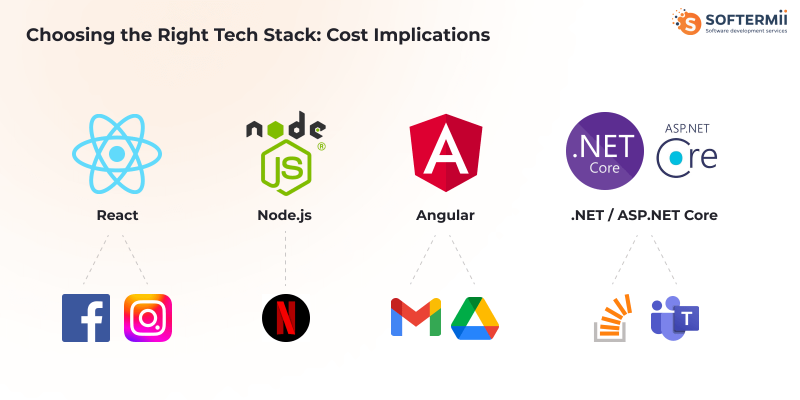

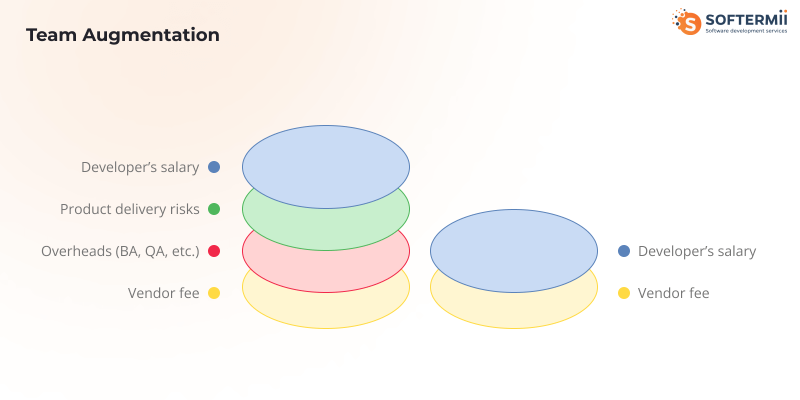
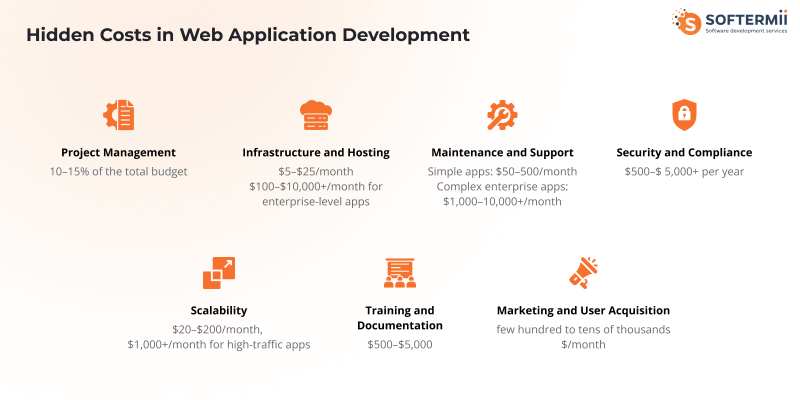
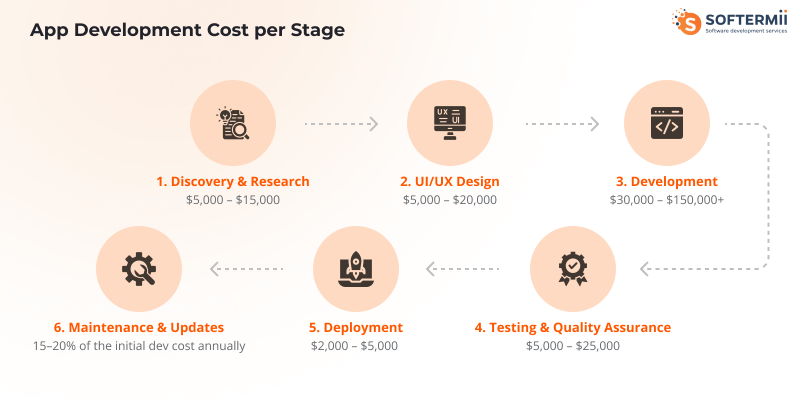

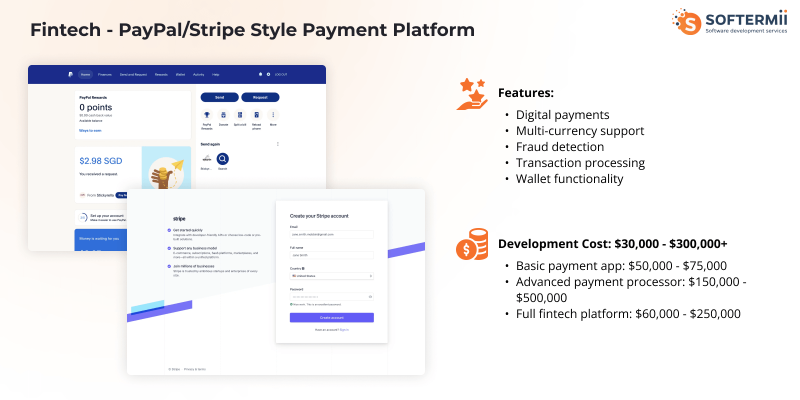


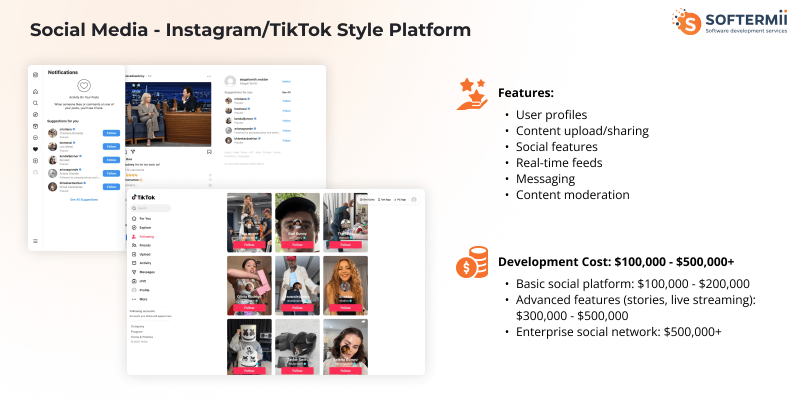
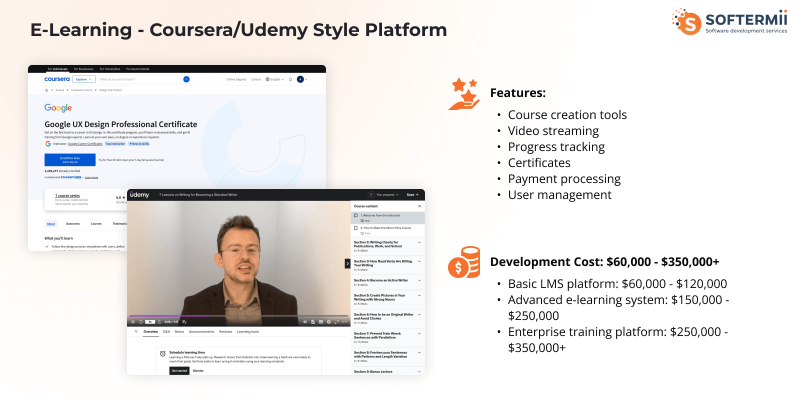
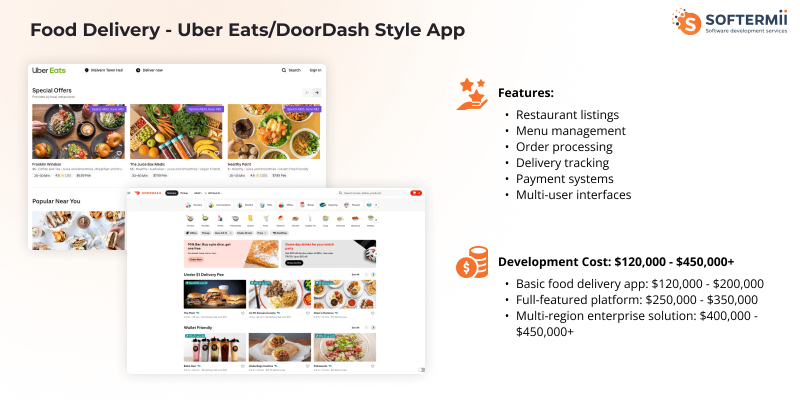

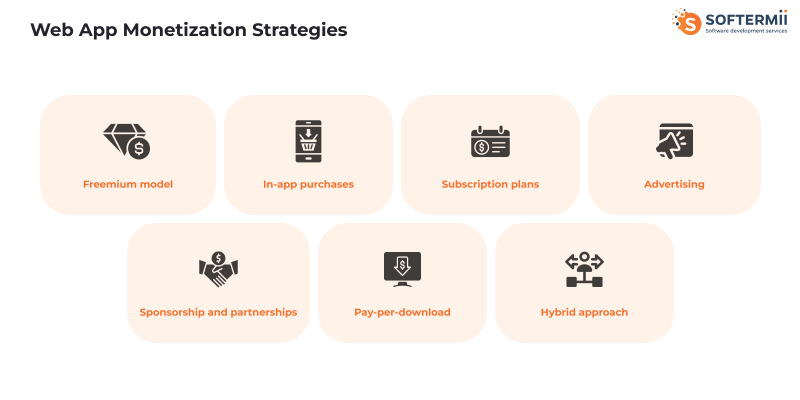
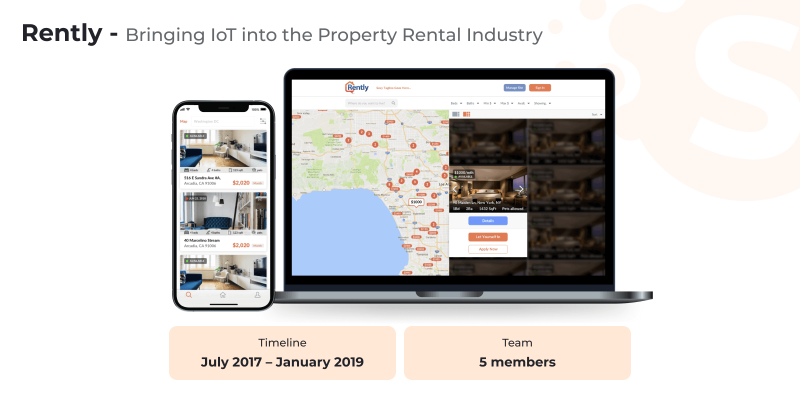








![How Much Does It Cost to Build a Website [Full Pricing Guide]](/assets/uploads/blog/20251104/cover-small.png)


